- Share via
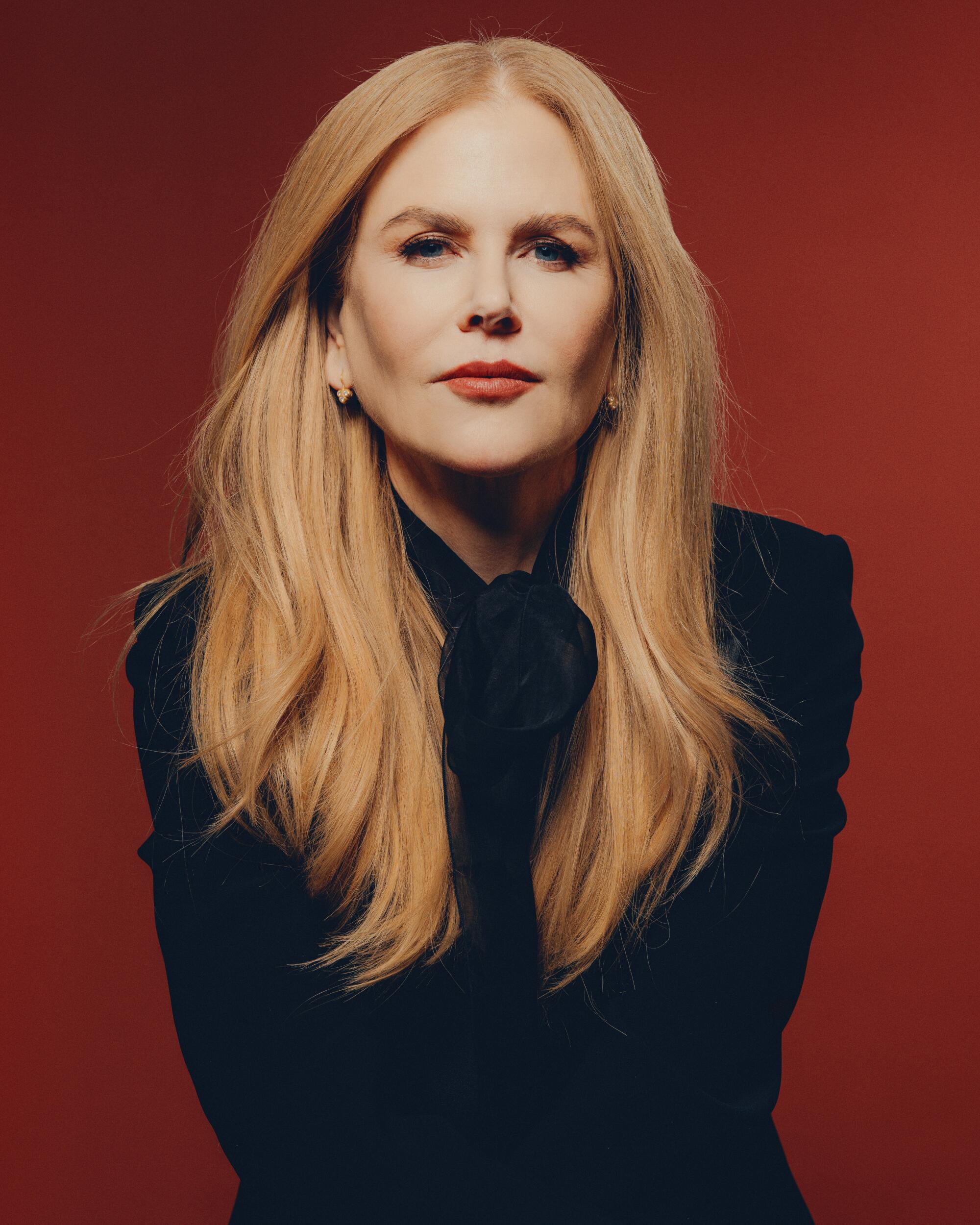
There was nowhere to go.
So they improvised.
Picture this, then: The central cast and crew of “Being the Ricardos,” the Amazon Studios film that would go on to earn Oscar nominations for stars Nicole Kidman (playing Lucille Ball), Javier Bardem (playing Ball’s husband and “I Love Lucy” co-star Desi Arnaz) and J.K. Simmons (playing co-star William Frawley), gathering for that first all-important table read. They’re anxious, excited and ready to take on the world: After all, it’s the first time they’ll read through scenes overflowing with agita over a truculent TV episode director, Ball being accused of being a Communist, and Lucy and Desi having it out over his extramarital affairs. It’s a film that will be shot in eight weeks, during a pandemic.
But there was no place to hold the reading. It was a pandemic.
So everything began, with director-screenwriter Aaron Sorkin in charge, on the windy rooftop of a parking garage.
Looking back
Fast-forward a year or so to find Kidman indoors, sharing a video chat with The Envelope and Lucie Arnaz, eldest child of Ball and Desi Arnaz. They squeal like schoolgirls upon seeing each other in the tiny screen frames, and Arnaz turns her camera around to reveal a breathtaking view out her windows at the mountains beyond. They say “I love you” during the conversation.
But first, there is this rooftop story.
“There was COVID,” says Kidman, 54. She’s in a bedroom at her home in Tennessee and seems fidgety; eventually, she gets up from the desk and relocates to sit on the bed. She looks like a regular person, if regular people had those cheekbones and those startling eyes; her hair is loosely tied back and she might have just come from a gym class. “There weren’t vaccinations.”
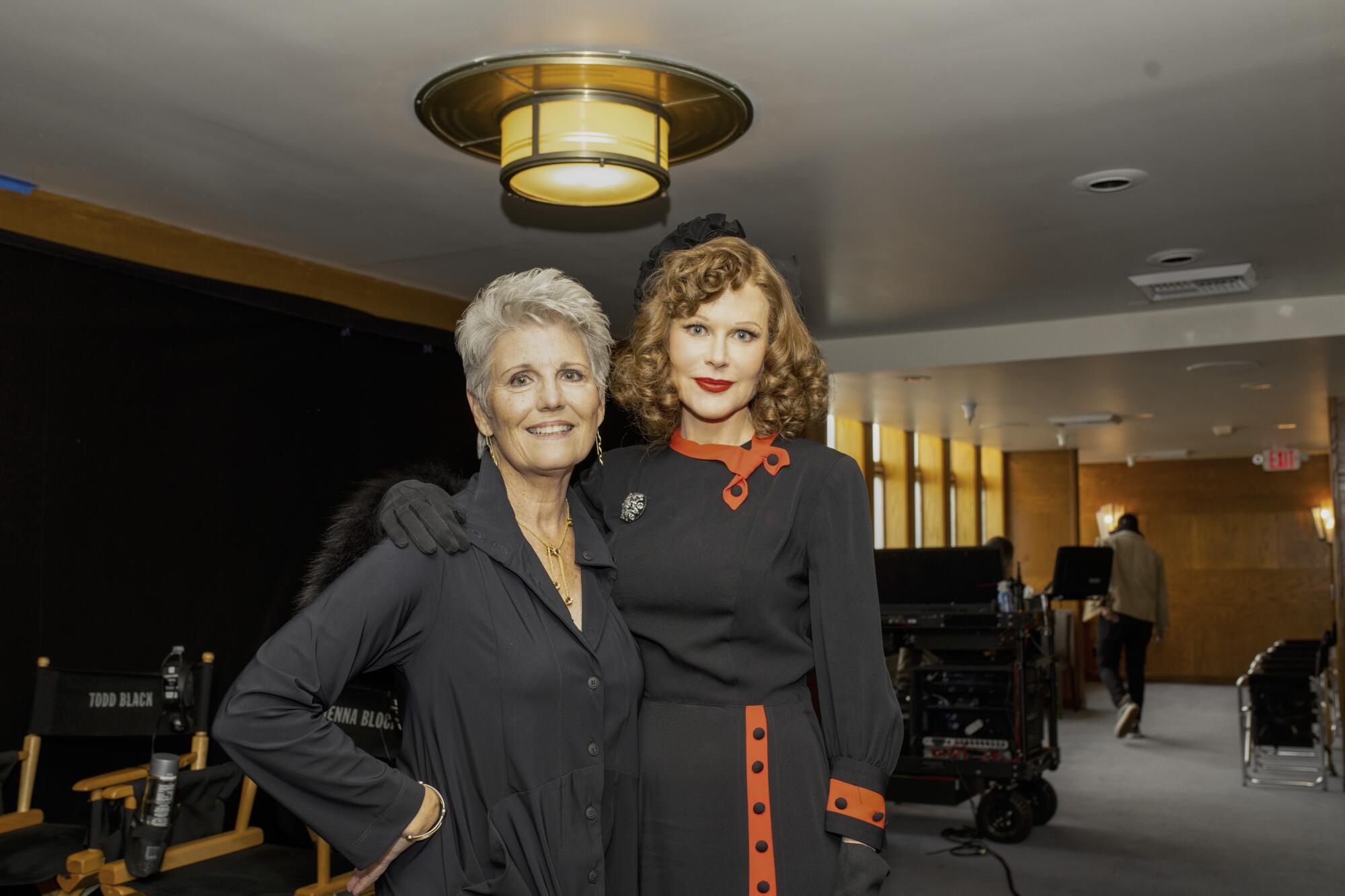
“How long were we going to do this?” Arnaz nods. At 70, she’s got a stunning head of spiked silver hair and more personality than this video screen has bandwidth and once in a while tosses around Yiddish. She doesn’t really resemble her mother, but there’s an enthusiastic zest that echoes across the generations.
That’s about when someone suggested they head up to the roof of that inhospitable parking garage.
“It was probably one of the strangest experiences I’ve ever had,” Kidman says of the read through. “They hadn’t booked any space; there was no space available. It was ventilated and everything. So they were like, ‘We can’t do the read-through,’ and I was like, ‘I have to hear it.’ I had a huge hat on because of the sun, because I’m very pale, and then I have glasses and the mask — it was like a read-through for a play. That memory is etched.”
Finding Lucille
Nicole Kidman knows what it’s like to be someone else. Yes, that’s the very definition of acting, but Kidman has quite often taken up roles based on onetime living, breathing people: Diane Arbus (2006’s “Fur”), Martha Gellhorn (2012’s “Hemingway & Gellhorn”), Gertrude Bell (2015’s “Queen of the Desert”) and Sue Brierley (2016’s “Lion”). And although she has four previous Academy Award nominations, her sole win has been as Virginia Woolf in 2002’s “The Hours.”
Now she’s got a chance at a second win, and for playing another groundbreaking female artist.
“I prepared so much,” says Kidman, who trained with a vocal coach to approximate Ball’s cigarette-influenced tenor as well as her higher range while shooting “I Love Lucy.” “When I was starting, yes, there was mimicking and impersonating, but there was behind the eyes, what is coming through? Because your mother, Lucie, had so much life inside her when she did [the show]. You can open your mouth and find the exact choreography, but the actual essence of what that is …”
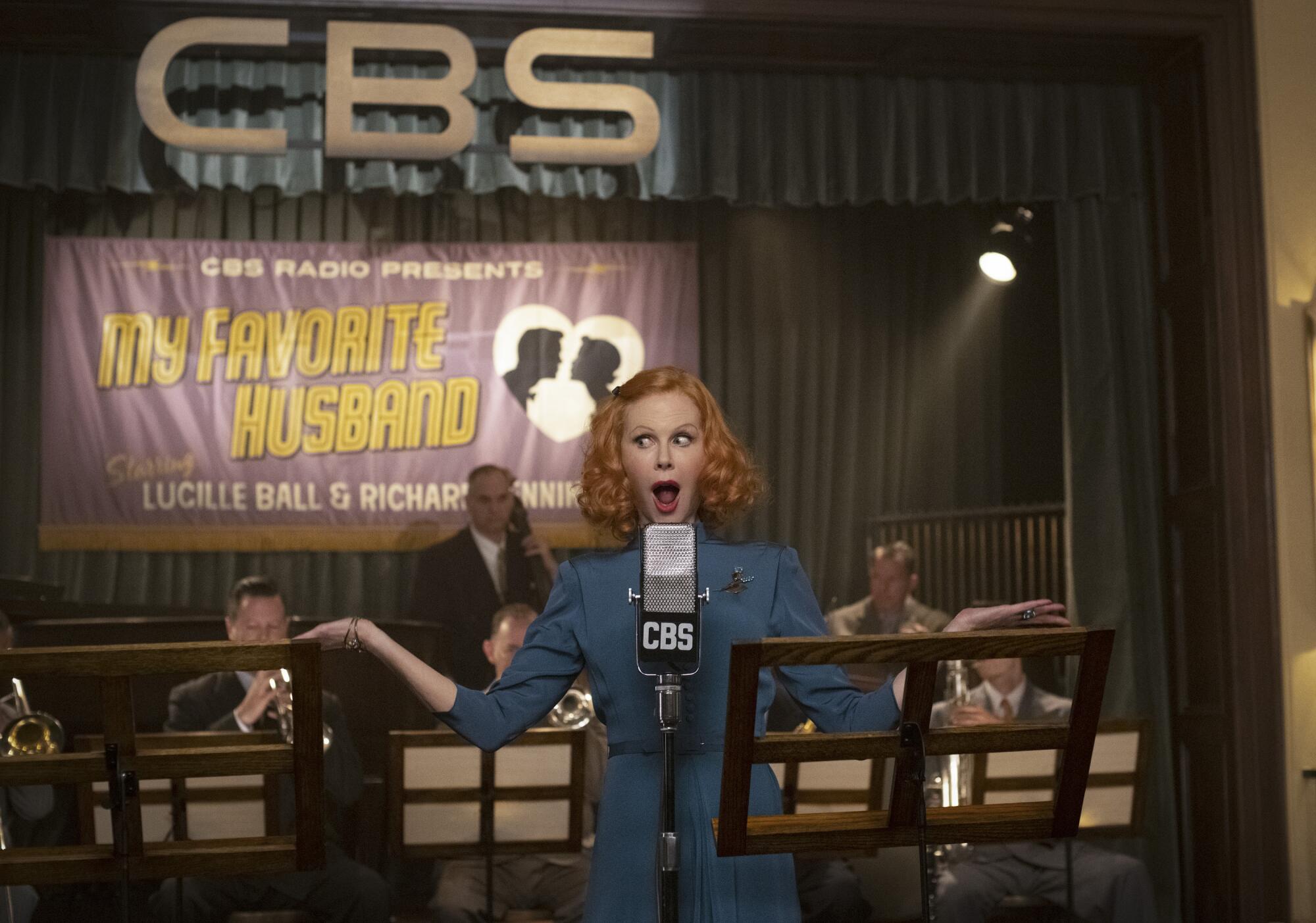
She pauses. Feelings don’t explain well, sometimes. She notes that she was able to “feast” on the “enormous amount of footage” of Ball on talk shows, or doing some of her other shows and films. “But it was finding her essence and starting to have all that penetrate,” Kidman continues. “There is no shortcut to that. It was just like, ‘This is going to be an enormous amount of work, and I’m going to have to trust that this is going to be absorbed, it’s going to go in slowly, and then it’s all going to come to fruition.’ It was months of being like a sponge. That was exciting, frightening, overwhelming and thrilling.”
Aussies rule
Kidman wasn’t the first choice for Lucy in “Ricardos” — Cate Blanchett was, another fair-haired Australian. Though she was announced for the part in 2015, by 2021 she had stepped away, and the scramble to find the next perfect Lucille Ball began.
Arnaz and Kidman find this whole scenario hilarious.
“It was bashert, like they say in the Jewish religion that this should happen,” says Arnaz, referring to destiny and soul mates. Then she adds, tongue firmly in cheek, “We thought that only an Australian should play my mother, from Day One.”
“Margot Robbie,” says Kidman.
“Don’t think that’s not true,” adds Arnaz.
“Or Naomi [Watts]. Or Russell Crowe.”
“Russell could have done it,” says Arnaz. “Or Hugh Jackman. I would have preferred Hugh, being [that I’m] female. Lots of flavor-of-the-month names were brought up to me after Cate was no longer part of this thing. But then when they finally said ‘Nicole Kidman,’ I went, ‘Oh, s—, really? Is she interested?’”
A connection made
Initially, Arnaz — who, along with brother Desi Arnaz Jr., acted as executive producer on the film — wasn’t going to come to the set. But as she recalls, it was Kidman who pushed her to appear. “You said, ‘No, I need you there,’” Arnaz recalls. “And I was like, ‘[Here I am], OK, look at what you wished for.’”
Arnaz grew up in the spotlight of two famous parents; she’s done her share of acting, though these days she’s more likely to be involved in curating her mother’s ongoing legacy. Arriving on the set and seeing Kidman as her mother — on one level, that was nothing new: She’s grown up watching impersonators “doing” Lucille Ball. But “Ricardos,” and Kidman’s performance, was something new.
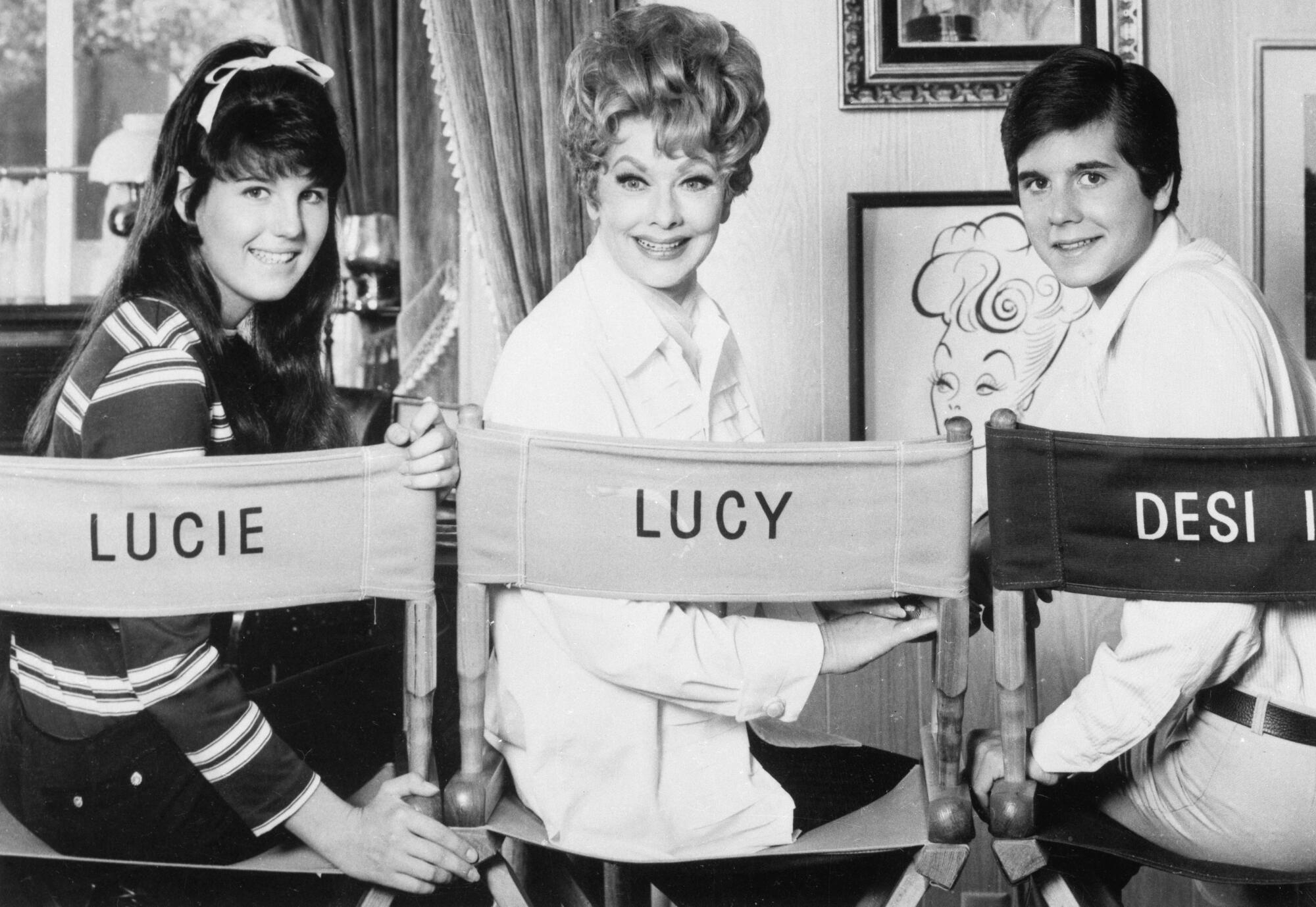
“To see someone play Lucille Ball for real and not as a joke — that was unique,” Arnaz recalls. “Not sending her up like some sort of impersonator. It was a little spooky and kind of wonderful. Same thing with Javier; he’s playing my dad. I’d look at him and think, ‘You’re my dad. And wait, I’m older than you are. What?’ It was kind of wonderful to go back in time.”
In a curious way, Kidman shares that particular circumstance in her own life: Married to country musician Keith Urban since 2006, they have two children together: Sunday, 13, and Faith, 11. (She also has two grown children with her ex, Tom Cruise.) That makes them the children of two very famous parents, one of whom happens to be a musician.
She admits she did take some advice about how to navigate those unique waters from Arnaz. “I’ve gotten so much knowledge from her, actually. I’ve seen the perspective of a child with a famous parent, through her eyes,” says Kidman.
“I will continue to constantly glean from her, because her life is an unusual life,” she adds, “I feel quite safe with her. And she’s as resilient as her mother. Part of that’s captured in the film, which Aaron was able to capture. I love that this story focuses on this woman who was up against many things, who was deeply passionate about her work, who had a great capacity to love, who failed and got back up again, failed and got back up again.”
Legacy in the making?
The history of Lucille Ball is rare among Hollywood starlets of her time; few actresses were able to command the sort of control she ultimately wielded: running her own studio (Desilu, with her husband), having a certain level of creative control over “I Love Lucy.” Sci-fi fans will know her as the woman who saved “Star Trek” (she kept it afloat through two pilots and a network rejection). Only a bit of all that features in “Ricardos,” but Kidman is well aware of how important that control was for Ball to stay balanced.
“That control is very, very good for her, because it makes her feel safe; it’s the thing she knows she can control. Desi, she can’t control. It’s this little patch of ground where it’s the home that [she wishes she] had,” she says.
So where does the story of Kidman go next? Ask her about who might play her in a movie of her life, scripted some decades hence — and probably without a first read on a windy rooftop — and she passes the ball: “I leave that up to Sunday and Faith,” she says. “I hope they’re as protective as Lucie was, because she’s very protective of her mother. But it’s unfathomable to me.”
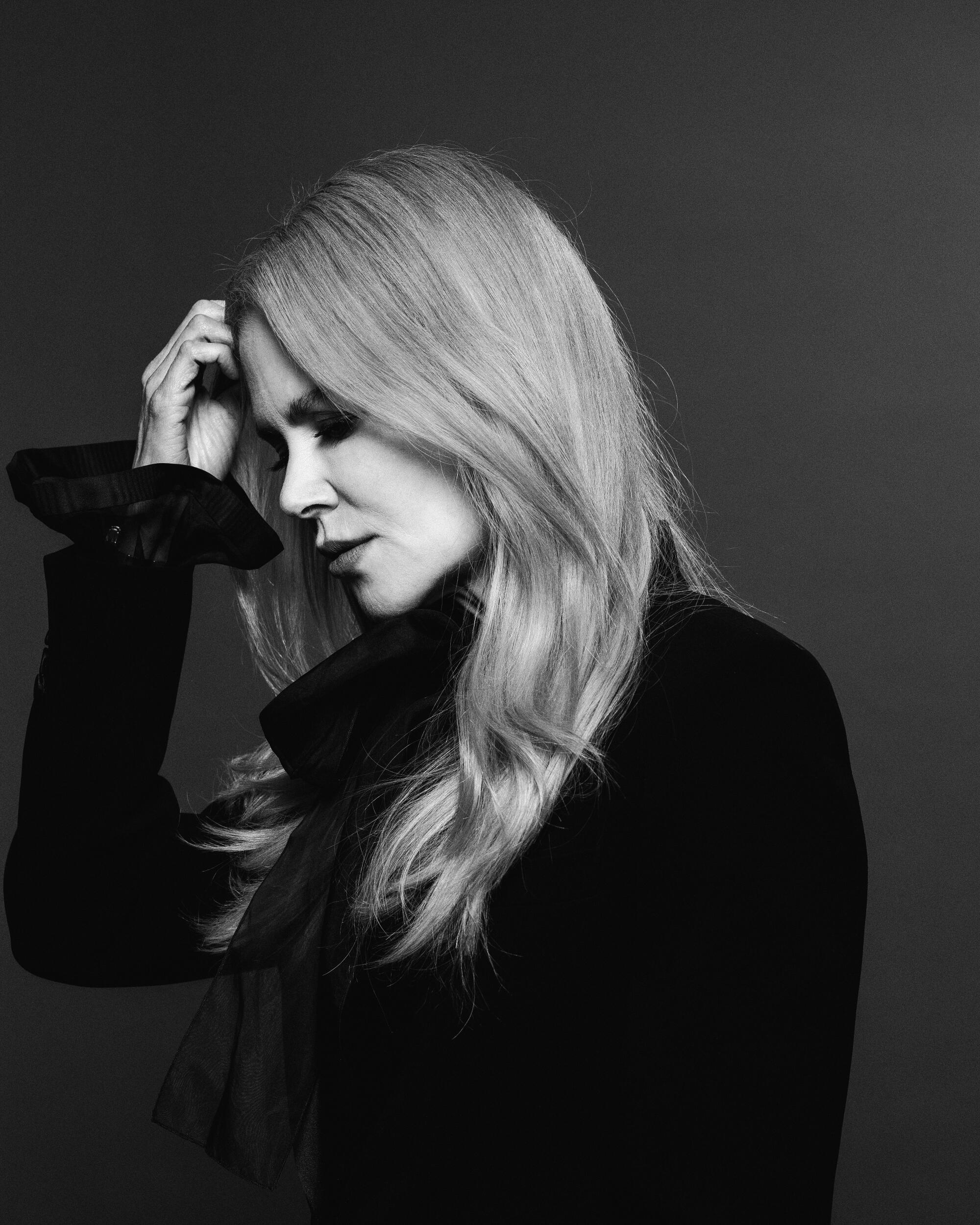
As is the idea that she might have a legacy worth enshrining. Sure, she’s had pro credits for going on 40 years — including multiple producing roles — and she’s got that Oscar and two Emmys, plus countless other honors. She’s a Big Star in an era of shrinking glamour, a giant on her own little patch of ground. But don’t bring up the “L” word around her.
“Too analytical,” she shrugs off the idea. “It boxes me in. I back away from that. I’m frightened of the confinement, the labeling. Don’t bridle me.”
As the song might go, don’t fence her in.
Kidman nods, a wispy sliver of strawberry-blond hair coming untucked from behind an ear. Perched on her bed, she towers over the video chat, staring down into the camera as if from a very great height. “It’s true, though,” she says. “I really don’t want to be tamed. I’m going to bark.”
More to Read
From the Oscars to the Emmys.
Get the Envelope newsletter for exclusive awards season coverage, behind-the-scenes stories from the Envelope podcast and columnist Glenn Whipp’s must-read analysis.
You may occasionally receive promotional content from the Los Angeles Times.









